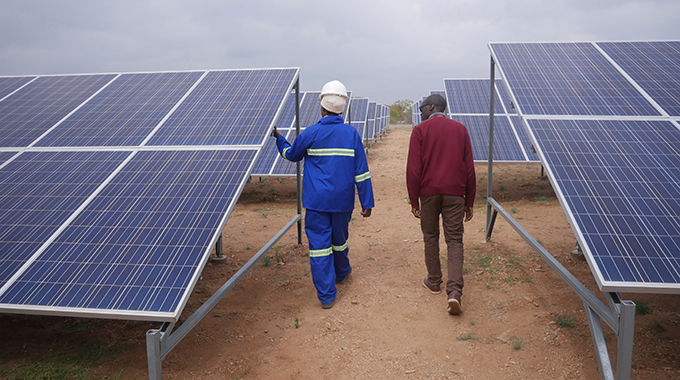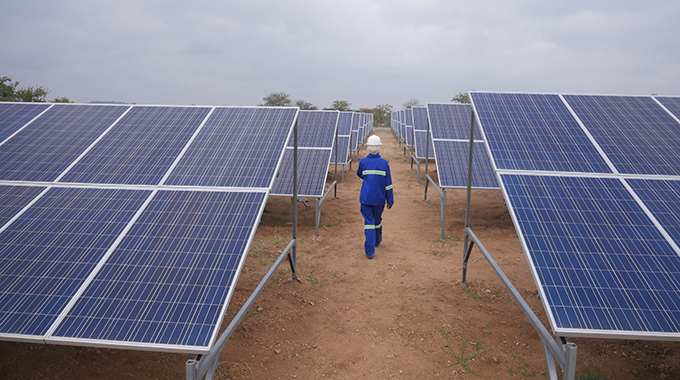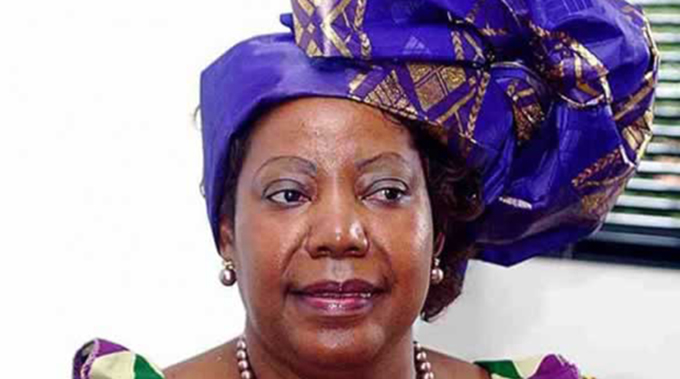Solar power boost for rural communities

Sydney Kawadza Senior Writer
A familiar fate fashioned by nature connects most rural women in Southern Africa who have no access to modern and renewable sources of energy at household level. The same is shared by Mrs Kiliboni Ndlovu (43) of Gwanda South in Zimbabwe and her Malawian colleague Mrs Hanna Logeya of Mwalija Village in Chikwawa District, who despite the 1 500km that separates them, live in the same dry and arid rural areas.
Their villages receive erratic rains, making agricultural productivity difficult.
However, their lives have been transformed through the seven million euro Sustainable Energy for Rural Communities Project (SE4RC) implemented in both countries.
Mrs Ndlovu is a farmer at the Mankonkoni Irrigation Scheme in Gwanda District, which has through the SE4RC, has been connected to a 99kW solar plant at Mashaba in Gwanda South.
“Before the project, we used diesel engines with individuals contributing diesel for watering the crops and this was not sustainable.
“One would need at least US$80 in three months to harvest the crops,” she said.
Besides being expensive, diesel is only found about 140km away in Gwanda town.
Mrs Ndlovu said electricity has boosted agricultural productivity for the farmers.
“In 2017, we received support under Command Agriculture and grew maize in the summer season. We also successfully grew wheat and beans in the winter. We did well for the wheat crop and repaid the Government loan,” she said.
Under the project, she was also trained as a pump minder for the irrigation scheme.
In Malawi, her colleague Mrs Logeya is the chairperson for the 96-member Mwalija Irrigation Scheme, established in 1996 by the Malawian government along the mighty Shire River.
Before construction of the solar mini grid, the farmers would either use diesel pumps or the labour-intensive treadle pumps.
“We relied on the rains to grow our crops, but we failed to produce enough food for our families. Some ended up abandoning their fields to become casual labourers,” she said.
Villagers relied on donor food handouts, while children suffered severe malnutrition.
Due to availability of electricity, they started growing different crops throughout the year, boosting nutrition and incomes after selling to various markets in the district.
In Mwalija, the farmers averaged 6x50kg bags of beans each, which was about K45 000 a bag and the maize sold as green mealies fetched K300 000. Crop and livestock officer in Gwanda Mr Uteng Silaigwana admits to the two women’s testimonies on improved yields after the SE4RC project.
“Basically, before the new system, the farmers were getting around four to five tonnes of maize per hectare. The farmers now prioritise high yield crop varieties; they are buying their inputs together.
“The yields have gone up to about 10 tonnes per hectare and with the new varieties, the yields can go up to 15 tonnes per hectare,” he said.
His Malawian colleague from the irrigation department in Nsanje District, Mr Edward Mkandawire said farmers have started growing a variety of crops for their own consumption and markets.
The SE4RC was informed by the argument that Southern African countries have for years been facing acute shortage of electricity to meet demand.
People, especially those in rural areas depend on other forms of energy such as biogas for cooking and heating, and petroleum-based fuels for lighting.
In rural areas, poverty and isolation, are widespread.
Rural communities continue to lag behind the urban areas, with only 37 percent Zimbabwean households accessing electricity that is connected via power lines.
Efforts to increase productivity, including value addition and diversification in agriculture is not attainable in both countries.
Lack of electricity in rural communities inhibit studying for school children, contributing to low pass rates and drop-outs, and lack of access to modern technology.
It also affects provision of health services, leading to increased maternal and post-natal deaths. The 7,1 million euro project ran for four-years, with Malawi being funded to the tune of 5,3 million euros while Gwanda got 2,7 million euros under the European Commission 10th EDF for ACP-Energy Facility.
The project was implemented by a consortium of non-governmental organisations, with Practical Action as the lead partner and technical partners Netherlands Development Organisation (SNV) in Zimbabwe and the Human Institute for Cooperation with Developing Countries (HiVOS) in Malawi.
Other implementing partners include Dabane Trust in Zimbabwe and Churches Action in Relief and Development (CARD) and Environment Africa in Malawi.
The project is also aimed at contributing to the achievement of the sustainable energy for all, which looks at closing the energy gaps by 2030.
In the course of the four years, the partners implemented the solar project in Gwanda District in Zimbabwe, Chikwawa and Nsanje Districts in Malawi.
Anchored on off-grid energy service delivery, the mini grids service irrigation schemes, clinics, schools and small agro and other businesses, while energy kiosks support them to enable service delivery for low energy users.
SE4RC project leader Mr Zibusiso Ncube said the massive project was implemented as a pilot project to test the viability of mini grids.
“In other words, the general perception that we had on this project is if you connect economic activities and very essential social services, then you can have an increased demand of energy in the community,” he said.
Energy is fundamental to poverty reduction and economic transformation.
The SE4RC is in line with United Nations Strategic Development Goals, namely; eradicate extreme poverty, universal primary education, gender equality, reducing child mortality rate, improved maternal health and environmental sustainability
The project is also relevant to the EU policies on renewable energy which emphasised security of supply and environmental protection.
In Zimbabwe, it responds to the National Energy Policy in increasing access to affordable energy services to all citizens while complementing the Rural Electrification Agency’s activities.
Practical Action regional director Mr Kudzai Marovanidze said solar power is vital in helping rural communities to meet their energy needs.
Says CARD executive director Mr Melton Luanga: “ We were already running solar energy projects, but on a smaller magnitude.
“The SE4RC is quite huge as compared to the projects that we have been running.”
The mini grid provides power mainly to economic activities, irrigation schemes — Rustlers’ Gorge, Mankonkoni and Sebasa — business centres, Mashaba and Msendami, and two social services — Mashaba Clinic and Mashaba Primary School.
The project is benefiting more than 8 000 people in Gwanda South, while in Malawi it is benefiting up to 20 000 people.
Zimbabwe and most other countries in the region need to roll out massive campaigns to promote the installation of both industrial and domestic solar systems which could immediately help the countries to make significant savings on energy costs while at the same time promoting a cleaner environment.
The current rate of traditional electricity supply is exorbitant for most rural communities and it makes their agricultural produce uncompetitive.
With an average access to electricity standing at 21 percent in the rural areas and 80 percent in urban areas, the need for alternative energy supplies to meet the energy supply deficit cannot be overemphasised.
Zimbabwe and most SADC countries have abundant renewable energy resources which are barely exploited and there is need to unlock value from them.
Access to electricity in both rural and urban areas is still low and the harnessing of renewable energy could easily fill this energy gap, especially now when Zimbabwe and most African countries are experiencing rapid urbanisation which is pushing up demand for energy.
Renewable energy collected from renewable resources such as sunlight, waste, wind, water and geothermal heat are some of the options that need to be looked at by Zimbabwe and other countries in the region.
The use of renewable energy can help accelerate access to energy, particularly for the majority of the rural people without access to electricity and who are still using traditional biomass which cause much harm to the environment.
Feedback: [email protected]











Comments